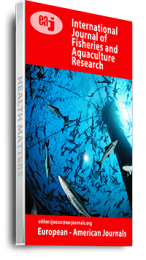Fish farming in Kibwezi is a recent livelihood alternative that was propelled by government funding under the Economic Stimulus Programme (ESP) between 2009 and 2012. This study evaluated the profitability and sustainability of fish farming in Kibwezi, Makueni County, Kenya using a sample size of 146 fish farmers. Fish production of finfish specifically Nile Tilapia (Oreochromisniloticus) and African Catfish (Clariasgariepinus) respectively were the species cultured. Twenty seven percent of farmers had an annual gross margin average of KES. 30,333.95 from a 300M2 fish pond with a gross margin ratio of 0.35. Net fish income was positive for 8.9 percent of farmers and averaged KES. 24,707.14. Farmers with a stocking density of 5fish/m2 and above serviced their total variable costs. Hatchery owners did better with 57.1 percent of them showing positive returns on both measures of gross margin and net fish income. Fingerlings, feeds and labour costs constituted 67% of total variable cost. Underweight of tilapia fish was a common problem among the sampled farmers. Adopters with the highest gross margins paid employees or committed themselves to pond management activities. Adopters made their own feeds. It is recommended that farmers be trained to make their own feeds
Keywords: Economic Stimulus Program (ESP), Kenya, Makueni County, Profitability, fish farming

